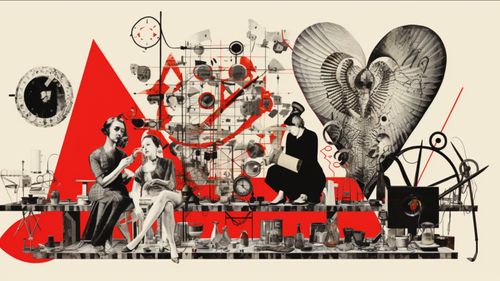The Fluxus Movement: An Artistic Rebellion Against Commercialism
Feb 06, 2024 · 2 mins read
0
Share

Imagine art that's not about beauty or skill, but about challenging the status quo. Welcome to Fluxus, a 1960s movement that turned the art world upside down, rebelling against commercialism and elitism.
Save
Share
Fluxus artists were the punk rockers of the art world. They believed art should be for everyone, not just the wealthy elite. They used everyday objects and actions in their work, making art accessible and relatable.
Save
Share
George Maciunas, the Lithuanian-born architect, was the ringleader. He saw Fluxus as a way to promote a revolutionary agenda, using art to fight against materialism and traditional aesthetics.
Save
Share
Fluxus wasn't just about visual art. It embraced all forms of expression, from music to poetry. Yoko Ono, before she met John Lennon, was a Fluxus artist. Her "Cut Piece" performance invited the audience to cut off her clothing, challenging societal norms.
Save
Share
Fluxus was also about humor and playfulness. Take Ben Vautier's "The Postman's Choice": a postcard with two addresses, leaving it up to the postman to decide the recipient. It's a cheeky commentary on free will and the randomness of life.
Save
Share
Fluxus events, known as 'Happenings', were unpredictable and interactive. In one, audience members were given a raw egg and a hammer. What they did next was the art. It was about breaking boundaries, literally and metaphorically.
Save
Share
Fluxus was global, with artists from Japan to Germany. It was a network of creatives who shared a common goal: to disrupt and democratize art. They communicated through 'Fluxkits', boxes filled with objects and instructions for creating art.
Save
Share
Despite its rebellious nature, Fluxus has had a lasting impact. It paved the way for performance art and installation art, and its influence can be seen in the work of artists like Marina Abramović and Damien Hirst.
Save
Share
Fluxus challenges us to question what art is and who it's for. It's a reminder that art can be found in the everyday, in the mundane, and in the actions we perform. It's a call to see the world differently.
Save
Share
So next time you're stuck in a meeting, remember Fluxus. See the art in the mundane. Challenge the status quo. And maybe, just maybe, start a little rebellion of your own. After all, as Fluxus artist Dick Higgins said, "Everyone is an artist."
Save
Share
0